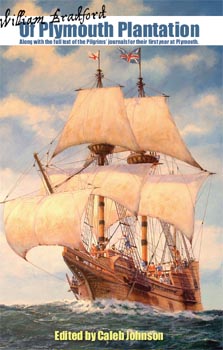Sodomy debate: Massachusetts Bay, 1641-1642
"What sodomitical acts are to be punished with death?"

In 1641, in the Massachusetts Bay Colony, three men were discovered to have had carnal relations with two young girls when the eldest girl was between seven and nine years old.[2]
The Massachusetts judges' need to decide the exact legal nature of the crime, and its punishment, resulted in a two-colony-wide discussion of "sodomy" and "sodomitical acts," the most detailed, lengthy, and revealing of such commentaries documented in American colonial records. That this discussion of "sodomy" was motivated by a crime of male against female illustrates the colonists' relative lack of preoccupation with gender in their categorizing of sexual acts and their relative emphasis on other characteristics of those acts.
Three Puritan ministers were asked "What sodomitical acts are to be punished by death...?" Although these theologians' answers are long and their reasoning minutely detailed, this very detail clarifies the character of their ideas about sodomy and its punishment.
In resolving this case Massachusetts magistrates, contrary to the ministers' advice, finally charged the men, not with "sodomy," or even "sodomitical acts," but with "carnal knowledge . . . in a most vile & abominal manner," and with "abusing" the girls in an "unclean & wicked manner." The magistrates did not order the guilty men to be executed, but imposed a series of whippings, fines, and public humiliations.
Winthrop's History
John Winthrop, in his history of New England, reported that the sexual contacts in question had occurred over a period of two years, when John Humfry, one of the assistants to the governor of the Massachusetts Bay Colony, had gone back to England, leaving his daughters, Dorcas and Sara, at Lynn, with Daniel Fairfield. Fairfield was described as a former indentured servant, and a married man, who had been a "member of the church ... in good esteem for piety and sobriety."[3]
Winthrop's history related that the two girls had visited Fairfield's house,
and were by him abused very often, especially upon the Lord's days and lecture days, by agitation and effusion of seed, and after by entering the body of the elder, as it seemed; for upon search she was found to have been forced . . .
Another man, Jenkin Davis, was said to have "abuse[d] the elder of these girls ... but constantly denied any entrance to her body . . . . "
Of the third man accused, John Hudson, Winthrop reported:
he did abuse her [Dorcas] many times, so as she was grown capable of man's fellowship, and took pleasure in it.
Unlike Winthrop's account, the court records describing the case, and reporting the verdict, did not specify the exact nature of the crime, and did not mention either penetration or emission.
The Body of Laws of the Massachusetts Bay Colony was not adopted until November 1641, and the sexual acts in question were discovered before that time. The judges of the colony had, therefore, to decide, not only the exact nature of the crime, but the appropriate punishment.
Bellingham's request

To this end the governor of the Massachusetts Bay Colony, Richard Bellingham, on March 28, 1642, wrote to the governor of Plymouth, William Bradford. The Massachusetts governor asked the Plymouth governor, his magistrates, and the colony's church elders for their advice "concerning heinous offenses in point of uncleaness."
The Massachusetts governor was trying to ascertain if the case in question involved a "sodomitical' act" punishable by death. (As there was at this time no law against rape in Massachusetts, and "no express law" in the Bible concerning rape, the magistrates did not consider whether the crime in this case might be so categorized.)
Bradford's reply
On May 17, 1642, Governor William Bradford of Plymouth answered Bellingham of Massachusetts, apologizing for the two-month delay. Bradford said he had discussed the legal questions with his assistants, and referred them to the Reverend Elders of Plymouth, three of whose written opinions he enclosed. Bradford himself offered no conclusions concerning the specific case in question, but suggested that "if there be not penetration," the death penalty not be applied in cases of sodomy, bestiality, and adultery. But he added that "foulness of circumstances," and the "frequency" of the crime might also determine its degree of punishment.
Rayner's reply
The Reverend John Rayner of Plymouth answered the questions "What sodomitical acts are to be punished with death?" and what circumstances made sodomitical acts capital?[5] "In judicial law," according to Rayner, (the "morality" of which was his concern) it was clear "that carnal knowledge of man or lying with man as with woman," with "penetration," was "sodomy," to be punished by death. His authorities were Leviticus and Genesis.
Rayner added "that this foul sin [sodomy] might be capital" though there was no "penetration," but only contact and rubbing leading to seminal emission. Such non-penetrative, emissive contact was capital, he argued. because Leviticus decreed that the man who was lain with, as well as he who lay with him, should be put to death. Non-penetrative (and even non-emissive) contact was also capital because St. Paul's letter to the Romans decreed that women, like men, "guilty of this unnatural sin" should be put to death. If such non-penetrative, non-emissive copulation of woman with woman was to receive death, so might other forms of non-penetrative, non-emissive contact, argued Rayner.
Non-penetrative contacts were also capital, said Rayner, by analogy with bestiality-for if a woman even attempted connection with an animal, whether there was penetration or not, Leviticus decreed that she should be put to death.
Non-penetrative acts were also capital, Rayner added, because certain characteristics of acts might make them equal to "penetration" in moral gravity. As examples he cited the "frequency." of acts-also their "long continence with a high hand, utterly extinguishing all light of nature." He added that sometimes even the determined intention to commit, and the "bold attempting of, the foulest acts" might be capital. He cited a biblical decree for attempted premeditated murder.
"Sodomy and bestiality" should also be punishable by death, continued Rayner, because these acts were "more against the light of nature than some other capital crimes of uncleanness." It was the greater foulness of sodomy and bestiality which made them capital, argued Rayner (with quite circular logic).
Sodomy should also be capital, he said, because "it might be committed with more secrecy and less suspician" than other crimes, and therefore needed to be more "restrained and suppressed by the law."
And finally, in a particularly obscure passage, Rayner concluded that sodomy should be capital even though this sin might not involve the same "degree of sinning against the family and posterity" as some other "capital sins of uncleanness." The idea seems to be that even if sodomy was less sinful than some other capital oftenses against the family and procreation, sodomy was still sinful enough to merit death.
Partridge's reply
The Reverend Ralph Partridge of Duxbury also answered the question "What is that sodomitical act which is to be punished with death?"[6]
Partridge thought it probable that "a voluntary effusion of seed" produced by the intercourse of man with man (as of man with woman) was the sin forbidden by Leviticus, and punished by death, He thought such intercourse was capital even if there was no "penetration"-because other acts may be analogous to "penetration." But Partridge then admitted he was not confident of his opinion concerning the propriety of death for non-penetrative copulation, for the following reasons.
First, Genesis described "the intended act of the Sodomites" on the analogy of "carnal copulation of man with woman" (that is, as including penetration).
Second, "among the nations where this unnatural uncleanness was committed," it did include "penetration."
And third, Partridge was informed that in the legal proceedings of English judges the indictment for sodomy defined the act as including "penetration."
Chauncy's reply
The Reverend Charles Chauncy was the third minister to answer, "The same question may be asked," he said, "of rape, incest, bestiality, unnatural sins, presumptuous sins."[7]
Chauncy argued, first, that those laws of Moses which constituted the essential "moral law," were grounded on the "law of nature," and "are immutable and perpetual." He cited Luther and Calvin among his authorities.
Second, sodomy, adultery, incest, bestiality, and rape were punished with death in Mosaic law, said Chauncy.
Third, Chauncy listed the reasons why biblical authorities prescribed death as the perpetual punishment for the "foul sins" in question: Such sins represented "Infamy" to the whole of human nature"; even before Mosaic law such sins were punished by death ("even by the heathen"). He added: "The land is defiled by such sins, and spews out" its inhabitants. And, finally, all theological commentators agreed that not only was illicit "carnal copulation" itself to be punished by death, but all "attempts" to commit such copulation were also to be capital. For example, death was provided for persons who uncovered the "shameful parts" of the body (the sex organs) for the purpose of illicit copulation. By analogy, it was plain that non-penetrative sodomitical acts, such as "contact" and "rubbing" were to receive death.
Fourth, Chauncy argued that the common phrase "lying with," did not mean only "carnal copulation" (penetration), but "other obscure acts preceding" penetration (including, it would appear, acts in the 1980s commonly called "foreplay").
Fifth, punishments derived from Mosaic law were often arrived at by analogy, for there were always cases not specificed in Holy Writ. For example, though the Bible did not expressly prohibit "destroying conception in the womb" (abortion), "yet by analogy . . . we may reason that a life is given for a life"-abortion was a capital offense: As to whether sexual "contact" and "rubbing" (without penetration) were capital crimes, analogy might be made to "Onan's sin" which was equal, Chauncy said, to patricide for to spill one's seed "is equivalent to killing the man who could have been born out of it."
Chauncy also cited the Old Testament passage in which God commanded that, if a wife, acting in defense of her husband, touched the genitals of a man who was attacking her spouse, her hand was to be cut off. Her punishment "is moral," said Chauncy. If even a woman motivated by such good intentions, who merely touched a man's genitals, was to receive death, it was reasonable for those to receive death who, "instigated by burning lusts, set on fire of hell," proceeded from "contact and rubbing" to "the spilling .of seed," acting "against nature."
Chauncy also said that if the "unnatural lusts of men with men, or woman with woman, or either with beasts" were to "be punished with death," then, arguing from its equal gravity, the "natural lusts of men towards children under age are so to be punished." (This was a reference to the Humfry case.)
Chauncy concluded. Circumstances, he said, could affect the relative gravity of the sin, and its appropriate punishment. It was one thing to commit sodomy "by sudden temptation, and another to lie in wait for it, yea to make a common practice of it." Premeditation and frequency made the sin worse. When sodomy, the emission of seed, and adultery went together in the same act "this is capital, double and tripple." Sodomy and adultery were also worse if committed by professors or church members," or "committed with those whose chastity they are bound to preserve."
Two additional questions
Each of the ministers also answered two additional questions. The first concerned the legally permissible means of extracting a confession from the accused in a capital case (such as sodomy).
Means of Extracting Confessions
Responding to this question all three were sensitive to the fact that Puritans, as religious dissenters, were protected in England by a legal tradition providing that those accused of capital crimes were not required to testify against themselves. These New England Puritans were aware, however, that in prosecuting sodomy, or other crimes which usually took place in private, it was difficult to establish a conviction without those accused admitting their participation. In such instances, all three ministers conceded the necessity of obtaining a confession by "due means," rather than by legal trickery, threat, or torture. (Chauncy did think torture might be used to extract a confession in those cases concerning "the safety of states and countries." But he did not state whether he thought sodomy constituted such a case.)
Numbers of Witnesses
The last question concerned the number of witnesses needed to convict in a capital case (such as sodomy). The three basically agreed that the Bible required two witnesses. They added, however, that in such cases, one witness and clear evidence might legally constitute a second witness, and thus be sufficient to convict.
Return to Age of Sodomitical Sin index • Go to next article
References
- ↑ citation forthcoming Research Request:
- ↑ Jonathan Ned Katz, Gay/Lesbian Almanac (NY: Harper & Row, 1983), pp. 78-82, citing John Winthrop. The History of New England from 1630 to 1649, edited by James Savage (Boston: Little, Brown, 1853). vol. 2. pp. 54-58. Researchers should note that the 1908 edition of Winthrop's "History" (New York: Scribner's), edited byJames Hosmer,is expurgated of sexual references. On the failure to categorize the crime committed in this case as "rape" see Robert Oaks, " 'Things Fearful to Name': Sodomy and Buggery in Seventeenth-Century New England," Journal of Social History, vol. 12, no. 2 (1979), p. 273. Bradford's, Rayner's, Partridge's, and Chauncey's opinions are in William Bradford. Of Plymouth Plantation, edited by Samuel Eliot Morison (New York: Knopf. 1952). pp, 317-20, 404-13. In Gay/Lesbian Almanac, Latin words in the three ministers' texts referring to specifics of sex acts are translated into English. I am deeply indebted to Jaime Vidal for translating the Latin, and for writing an eighteen-page analytical "disquisition" on the ministers' comments. (The English and European tradition of rendering sexual specifics in Latin requires analysis: the implied dangerousness of words describing sexual details is interesting. For my comment on this see p. 166 of Gay/Lesbian Almanac.) Researchers should note that the 1912 edition of Bradford's History of Plimmoth Plantation, edited by W.C. Ford, 2 vols. (Boston: Houghton Mifflin) has many useful footnotes referring to the old sources cited as authorities by the three ministers. For the legal records of this case see Shurtleff, Mass., vol. 2, pp. 12-13, 21-22.
- ↑ Image painted in the 1640s. American Antiquarian Society; reproduced from Alistair Cooke, Alistair Cooke's America. NY: Knopf, 1973, 80.
- ↑ citation forthcomingResearch Request:
- ↑ ?, pp. 404-06
- ↑ ?, pp. 407-08.
- ↑ ?, pp. 408-13
Categories
- Pages with reference errors
- The Age of Sodomitical Sin
- Bellingham, Richard (1592-1672)
- Bradford, William (1590-1657)
- Chauncy, Charles (1592-1672)
- Colonizing and Settling, 1585-1763
- Law
- Massachusetts Bay Colony
- Partridge, Ralph (1579-1658)
- Plymouth Colony
- Puritanism
- Raynor, John
- Research Requests
- Sodomy
- Winthrop, John (1577?-1649)
- 1640-1649
- 17th century
